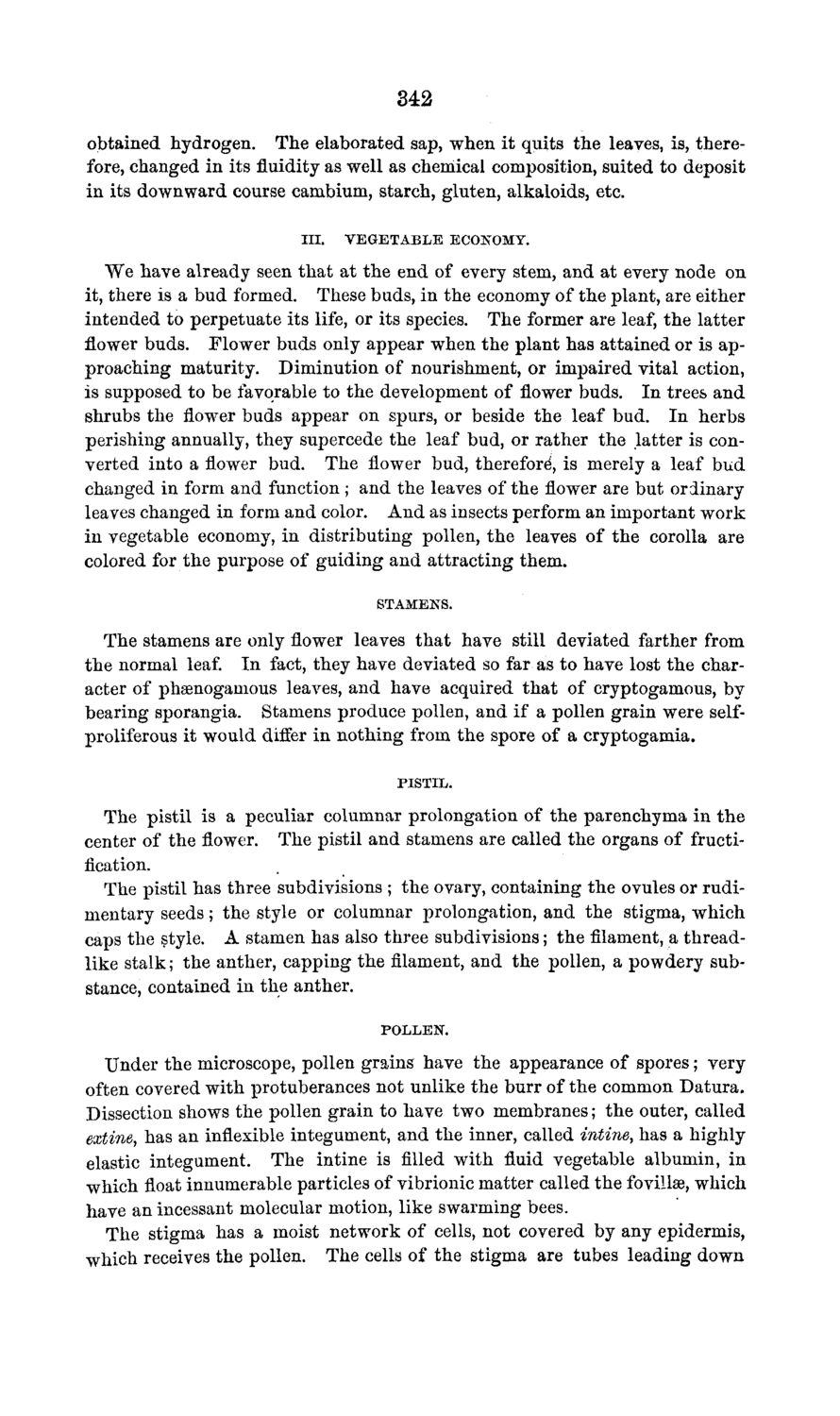| |
| |
Caption: Board of Trustees Minutes - 1869
This is a reduced-resolution page image for fast online browsing.

EXTRACTED TEXT FROM PAGE:
342 obtained hydrogen. The elaborated sap, when it quits the leaves, is, therefore, changed in its fluidity as well as chemical composition, suited to deposit in its downward course cambium, starch, gluten, alkaloids, etc. III. VEGETABLE ECONOMY. We have already seen that at the end of every stem, and at every node on it, there is a bud formed. These buds, in the economy of the plant, are either intended to perpetuate its life, or its species. The former are leaf, the latter flower buds. Flower buds only appear when the plant has attained or is approaching maturity. Diminution of nourishment, or impaired vital action, is supposed to be favorable to the development of flower buds. In trees and shrubs the flower buds appear on spurs, or beside the leaf bud. In herbs perishing annually, they supercede the leaf bud, or rather the latter is converted into a flower bud. The flower bud, therefore", is merely a leaf bud changed in form and function ; and the leaves of the flower are but ordinary leaves changed in form and color. And as insects perform an important work in vegetable economy, in distributing pollen, the leaves of the corolla are colored for the purpose of guiding and attracting them. STAMENS. The stamens are only flower leaves that have still deviated farther from the normal leaf. In fact, they have deviated so far as to have lost the character of phsenogamous leaves, and have acquired that of cryptogamous, by bearing sporangia. Stamens produce pollen, and if a pollen grain were selfproliferous it would differ in nothing from the spore of a cryptogamia. PISTIL. The pistil is a peculiar columnar prolongation of the parenchyma in the center of the flower. The pistil and stamens are called the organs of fructification. The pistil has three subdivisions ; the ovary, containing the ovules or rudimentary seeds; the style or columnar prolongation, and the stigma, which caps the style. A stamen has also three subdivisions; the filament, a threadlike stalk; the anther, capping the filament, and the pollen, a powdery substance, contained in the anther. POLLEN. Under the microscope, pollen grains have the appearance of spores; very often covered with protuberances not unlike the burr of the common Datura. Dissection shows the pollen grain to have two membranes; the outer, called extine, has an inflexible integument, and the inner, called intine, has a highly elastic integument. The intine is filled with fluid vegetable albumin, in which float innumerable particles of vibrionic matter called the fovillae, which have an incessant molecular motion, like swarming bees. The stigma has a moist network of cells, not covered by any epidermis, which receives the pollen. The cells of the stigma are tubes leading down
| |